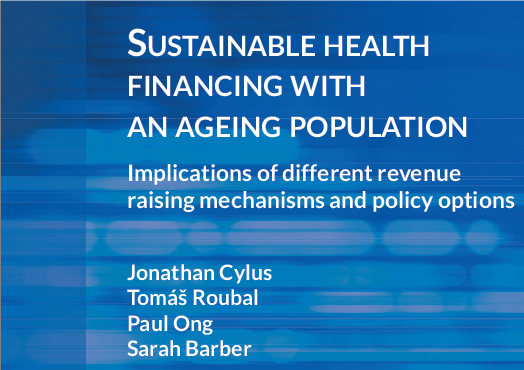
Key messages-
-
Population aging affects a country’s ability to generate revenues for health.
-
We simulate the effects of population ageing on the ability to raise revenues for health from income taxes, goods and services taxes, property taxes, and social contributions. We find that:
-
For countries with a relatively younger population currently undergoing a rapid population age-structure transition, all revenue sources have the potential to grow considerably over the medium to long-term. The challenge is to improve tax collection and the priority given to health to take advantage of this potential
-
For countries with a large share of the population at older ages, revenues from social contributions linked primarily to the labour market are expected to decline substantially as a result of population ageing.
-
-
Three general policy options could address declining labour market-related social contributions due to population ageing. They include
-
expanding the revenue base by increasing the number of contributors, such as by increasing migration rates or raising pension ages
-
increasing the rate of taxation on social contributions, and
-
diversifying the mix of financing sources.
-
-
Simulations suggest that these strategies in isolation are unlikely to fully compensate for the shortfall in revenues in countries that depend heavily on the labour market to finance health care.
-
Health and long-term care financing systems that are heavily reliant on labour market-related contributions may need to be redesigned if they are to continue to generate sufficient, stable revenues in the context of population ageing. This will require political commitment and a willingness to prioritise health.
-
This research underscores the importance of moving away from financing health through labour-related contributions and premiums, and as a result de-linking entitlement to care from the payment of contributions. Taxation policies can ensure health financing is both sustainable and equitable.
Link to project page https://extranet.who.int/kobe_centre/en/project-details/Sustainable_financing
In recognition of market failures, health financing largely comes from government or through compulsory mechanisms that are pre-paid and heavily regulated. Revenues are collected from different sources, pooled at some level, and used to purchase health care goods and services. In OECD countries, for example, the main sources of revenues are income taxes, goods and services taxes, property taxes, and social contributions. As populations age, countries experience changes in the ability to generate revenues from these sources.
Our simulations show marked differences in the ability to generate revenues from taxation and social contributions depending on a country’s population age structure. For countries where the population is comprised of a large share of relatively younger people who are likely to be active in the labour market, such as Indonesia, population ageing could be expected to have a positive impact on revenue generation from all sources. This presents an opportunity, the challenge being to improve tax collection mechanisms to capture this benefit. In contrast, for a country with a large share of the population already at older ages and increasingly exiting the formal labour market over time, such as Japan, relying on social contributions primarily generated from the labour market to raise revenues for health results in declining revenues per person over the coming decades.
Three policy options to address declines in labour-related social contributions due to population ageing are explored through simulations. The first option is to increase the number of contributors. The second is to increase the contribution rate on social contributions. The third is to diversify the mix of financing sources.
Our simulations suggest that in countries that depend heavily on the labour market to finance health, none of these strategies on their own are likely to make up for the shortfall in revenues due to population ageing. For “older” countries such as Japan, declining social contribution revenues could be expected even if the revenue base were broadened or if contribution rates were raised equally across all age groups. Diversifying the mix of revenue sources in favour of sources that are less affected by ageing may be an appropriate solution. However, countries will likely still need to reprioritise their current public-sector budgets and allocate more resources to health or increase tax rates on alternative revenue generation sources in order to maintain sufficient and stable revenues for health.
This analysis underscores the importance of moving away from financing health through labour-related contributions and premiums. De-linking entitlements from the payment of contributions and instead relying more on general taxation to fund health is critical both for equitable financing and access to care, as well as for sustainability.

